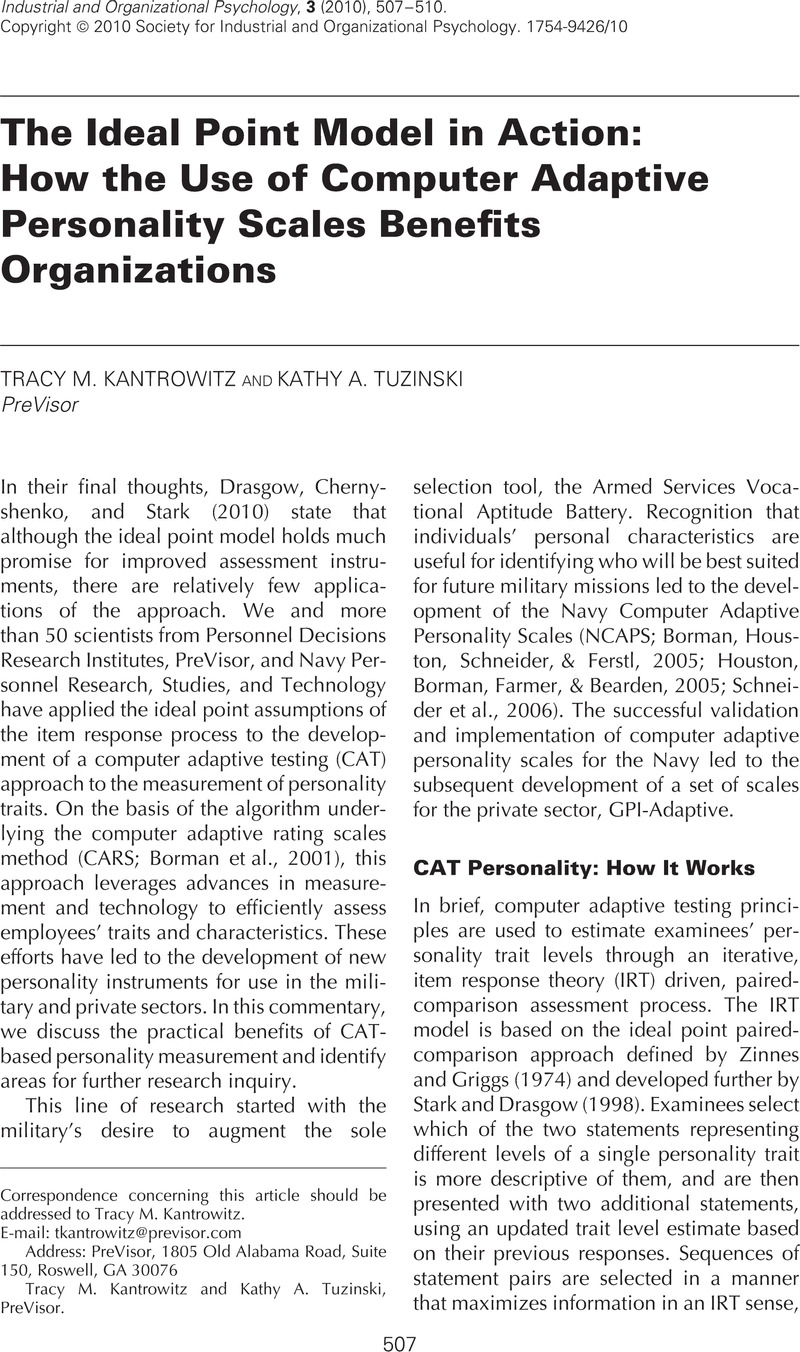Article contents
The Ideal Point Model in Action: How the Use of Computer Adaptive Personality Scales Benefits Organizations
Published online by Cambridge University Press: 07 January 2015
Abstract

- Type
- Commentaries
- Information
- Copyright
- Copyright © Society for Industrial and Organizational Psychology 2010
References
- 5
- Cited by




